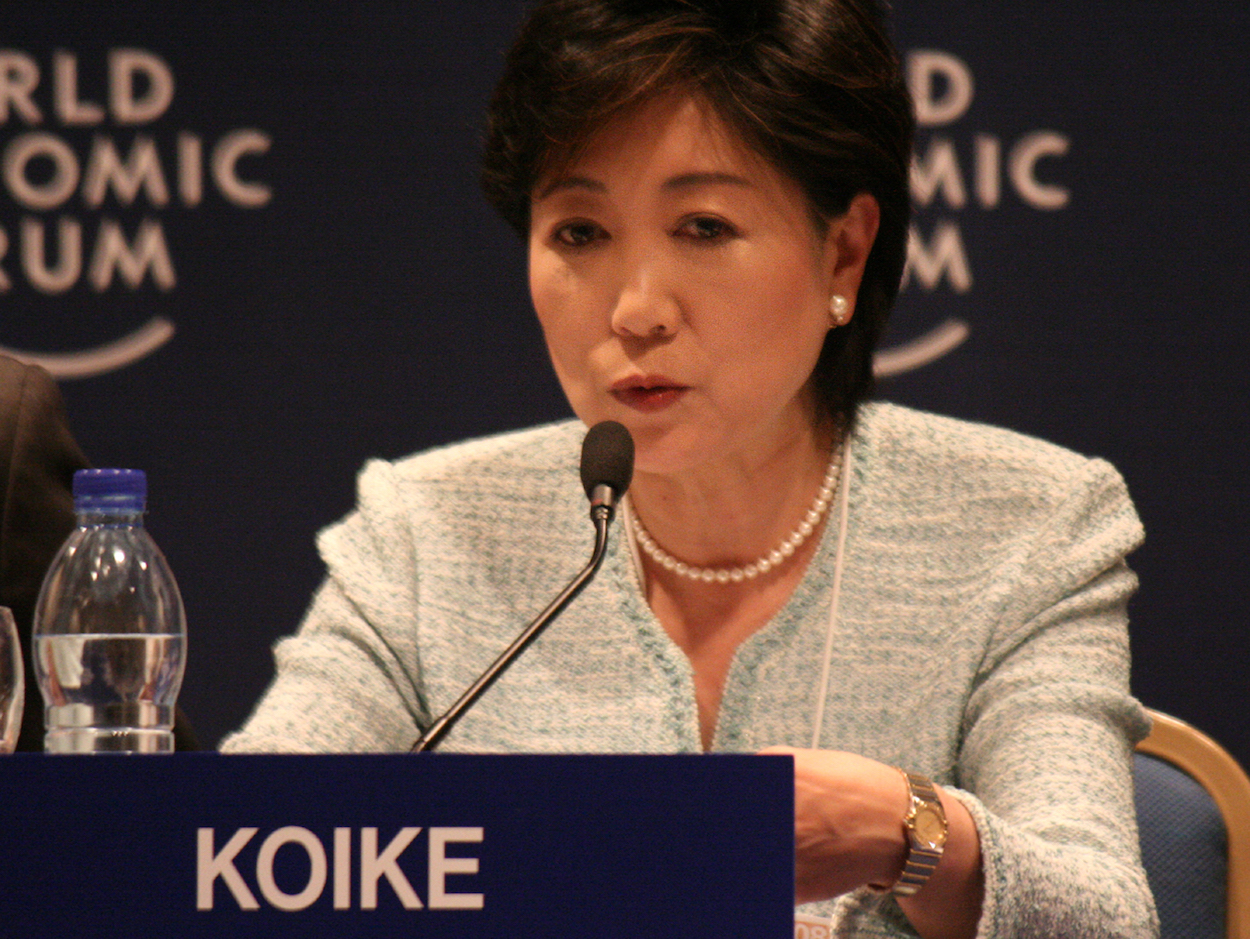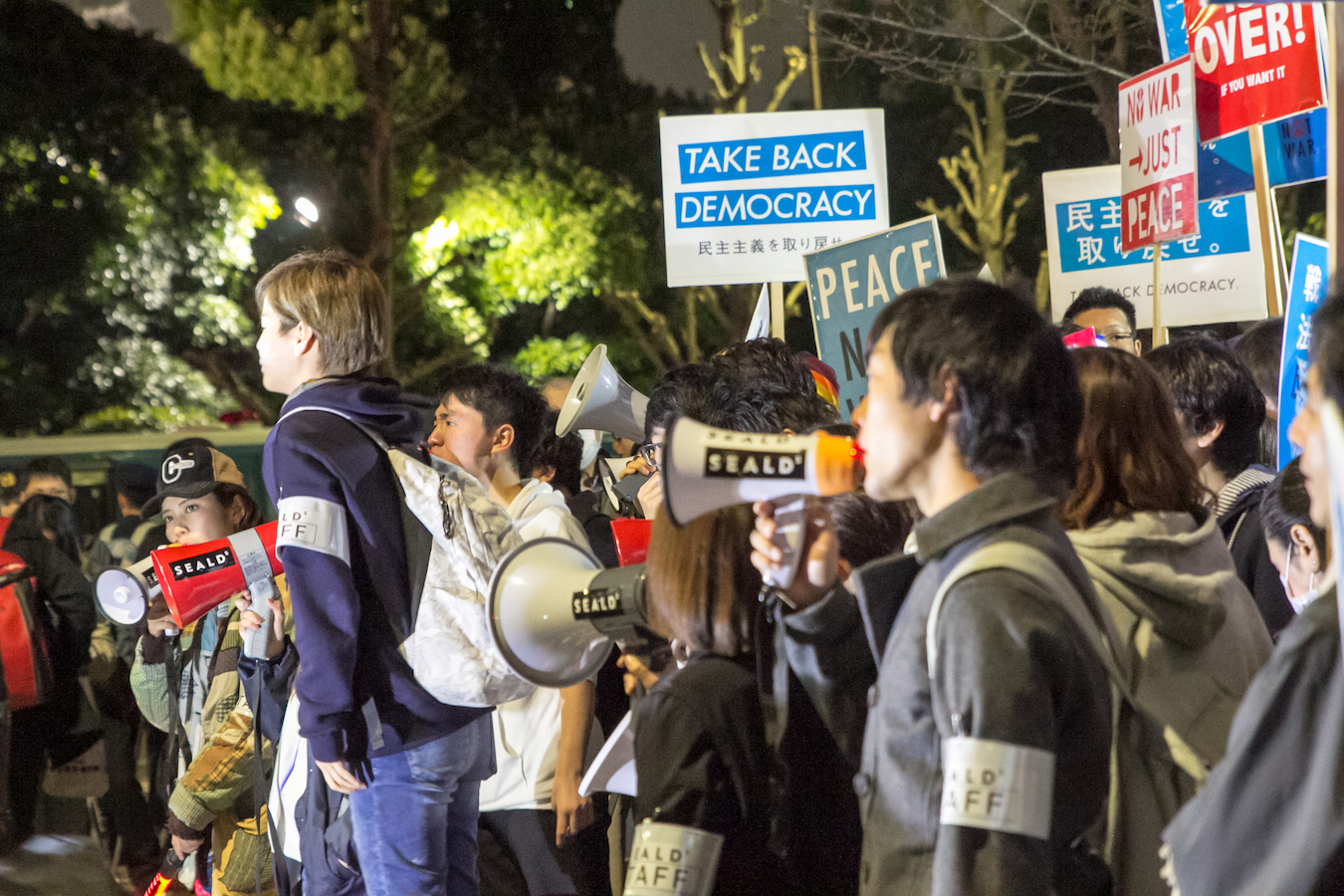by Brian Hioe
語言:
English
Photo Credit: Japanese Government/CC
THE EXAMPLE of the rise of Yuriko Koike’s “Party of Hope” in Japan, offers an example in a mirror darkly for Taiwan, perhaps. Namely, what Japan offers as a counter-example for Taiwan is the failure of democratic politics in allowing for the rise of two starkly conservative parties which do not substantially differ in their politics. Perhaps we may term this a failure of democratic transition. Nevertheless, there may be some lessons to be learned for Taiwan.
Though ostensibly a democracy, Japan has been dominated since the end of the World War II by the Liberal Democratic Party (LDP) which, despite its name, is a conservative party. Although liberal challenges to the LDP have emerged in the forms of the Democratic Party of Japan, and the later Democratic Party, which all shared politicians, these have always been temporary.
 Yuriko Koike. Photo credit: World Economic Forum/CC
Yuriko Koike. Photo credit: World Economic Forum/CC
On the other hand, the sudden rise of the “Party of Hope” has quelled future challenges by some reorganized form of the Democratic Party. Koike hardly differs from the Shinzo Abe-led LDP in politics, having served as Defense Minister during his first stint as prime minister. However, in its most recent round of attempting to challenge the LDP, the Democratic Party allowed conservative politicians within the party to take the lead, having been constituted much more on the basis of opposition to the LDP rather than political consensus, and having sharply distinct liberal and conservative wings. The liberal wing had previously controversially aligned itself with the Japanese Communist Party, a powerful third party in Japan, controversial for its supposed adherence to Communism despite being more or less a reformist party.
Koike struck a deal with conservative Democratic Party head Seiji Maehara to have party candidates run under the banner of the “Party of Hope,” and banning liberal candidates from the Democratic Party from running, leading to liberal politicians within the Democratic Party to split and form the Constitutional Democratic Party. Koike does not seem to aim genuinely challenge Abe in upcoming snap elections on October 22nd, but to secure a negotiating position for herself with Abe through splitting the vote while marginalizing liberal politicians altogether. As such, some have termed this a regression to two-party conservative politics and the demise of liberal politics in Japan. Interestingly enough, Koike achieved this by taking the Japanese political world by storm by being elected mayor of Tokyo and through the Party of Hope defeating the LDP in local elections in Tokyo. This was sufficient to allow for the Party of Hope to rise to national-level politics through dealmaking with the conservative leadership of the Democratic Party. Either way, the conservative camp is now fully in the ascendancy in Japan, and there are few viable left-wing challenges, although some, perhaps insufficiently attentive to internal contestation within the conservative camp in Japan, mistakenly perceive this as having consolidated Abe’s power rather than marking the emergence of conservative challenges against Abe from within his own camp.
Fortunately, at present, the conservative party of the KMT seems to be on the retreat in Taiwan, even as the supposedly center-left DPP is becoming more conservative. Nevertheless, if the KMT becomes increasingly marginalized and the DPP becomes the only politically powerful party in Taiwan, it is possible that the the DPP would split. As the DPP fundamentally was organized on the basis of opposition to the KMT, the former authoritarian party in Taiwan, the DPP has a left and right wing and could potentially split along those lines.
 Shinzo Abe. Photo credit: Kremlin/CC
Shinzo Abe. Photo credit: Kremlin/CC
Alternatively, it is also possible that what would result is two political parties which do not substantially differ in political views, but differ on the basis of political contestation, in which different actors in the pan-Green camp attempt to secure a better bargaining position with the party leadership. Indeed, along such lines, the NPP was accused of being a “flanking” party of the DPP when it first emerged in 2016 elections, although relations have worsened with the DPP since.
What Japan offers, then, is an example in which conservative hegemony comes to dominate the political spectrum with the emergence of conservative two parties fundamentally from the same political camp. This ultimately proves occluding to other forms of politics. However, the Party of Hope’s relation to the Democratic Party also offers an example of how a political party can purge its liberal wing and allow for conservative dominance of the party.
What Taiwan has which Japan does not have is a number of “Third Force” parties which emerged after the Sunflower Movement, although at present only the New Power Party has seats in the legislature. The youth movement in Japan opposed to the Abe-led reinterpretation of Article 9 of the Japanese constitution did not manage to transition into any wave of political change within the electoral system, although it aspired to such aims. On a positive note, with the NPP and other parties hoping to field a number of local candidates at the level of city councillors in upcoming elections, the Party of Hope in Japan illustrates how it is possible to take the political by storm through a number of local level victories and challenge the ruling party, even if this is through dealmaking with the opposition.
 SEALDs demonstration in March 2016. Photo credit: Oren Rosen/CC
SEALDs demonstration in March 2016. Photo credit: Oren Rosen/CC
However, the progressive NPP would likely not pursue making deals with the highly conservative KMT, which is now currently the opposition. Although this would likely lead to accusations against the NPP from other third parties that the NPP is accommodating too much to the status quo, it is more likely the NPP could perhaps secure a better bargaining position with regards to the DPP, or even seek to hope to provoke a split within the DPP’s liberal and conservative wings, perhaps with the liberal wing of the DPP breaking off and joining the NPP.
The political future of Japan, in which there has never been a viable opposition to the LDP, remains to be seen. Nevertheless, as with any political context, perhaps Japanese politics can offer third parties and progressive political actors in Taiwan some lessons to be learned.

